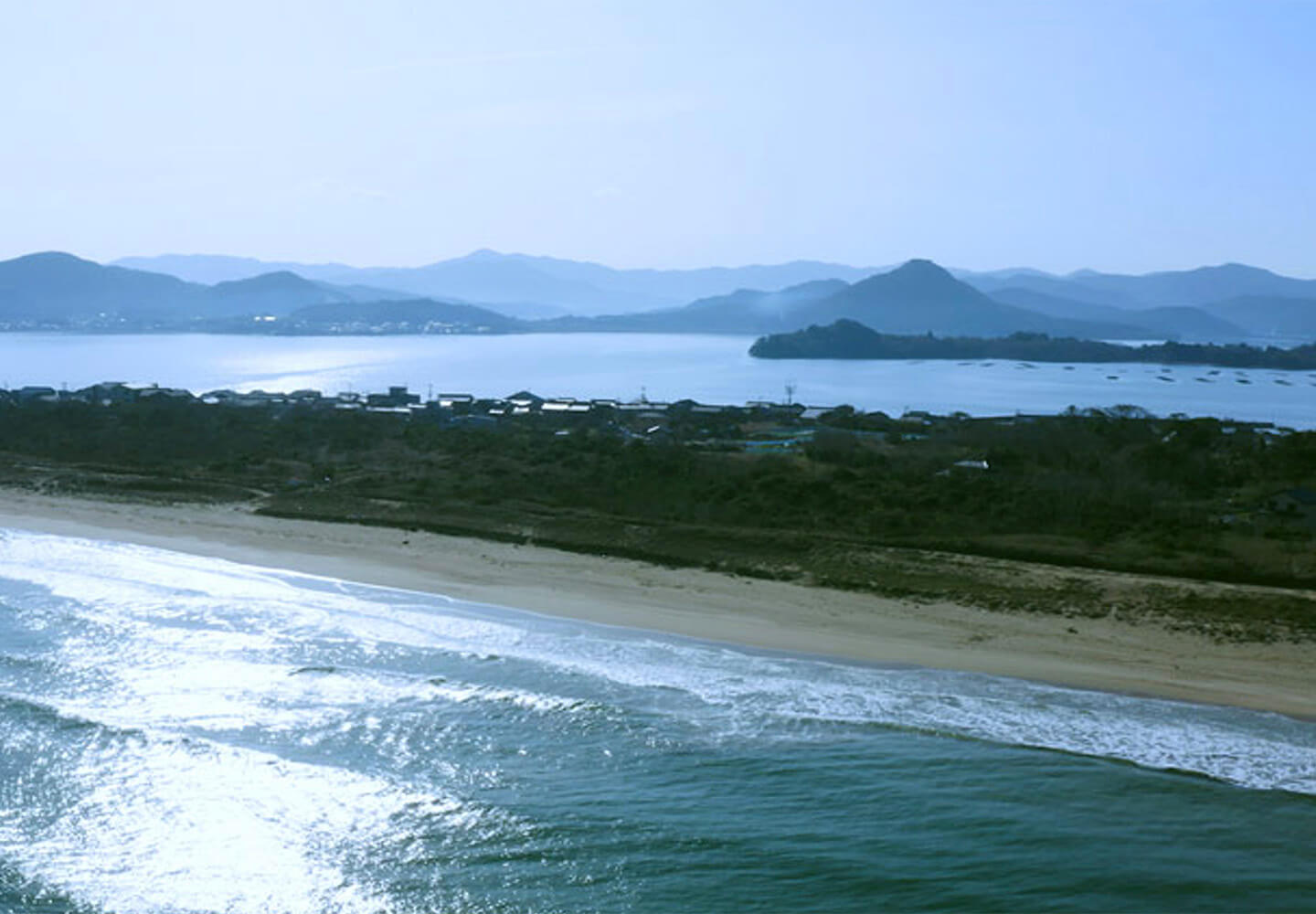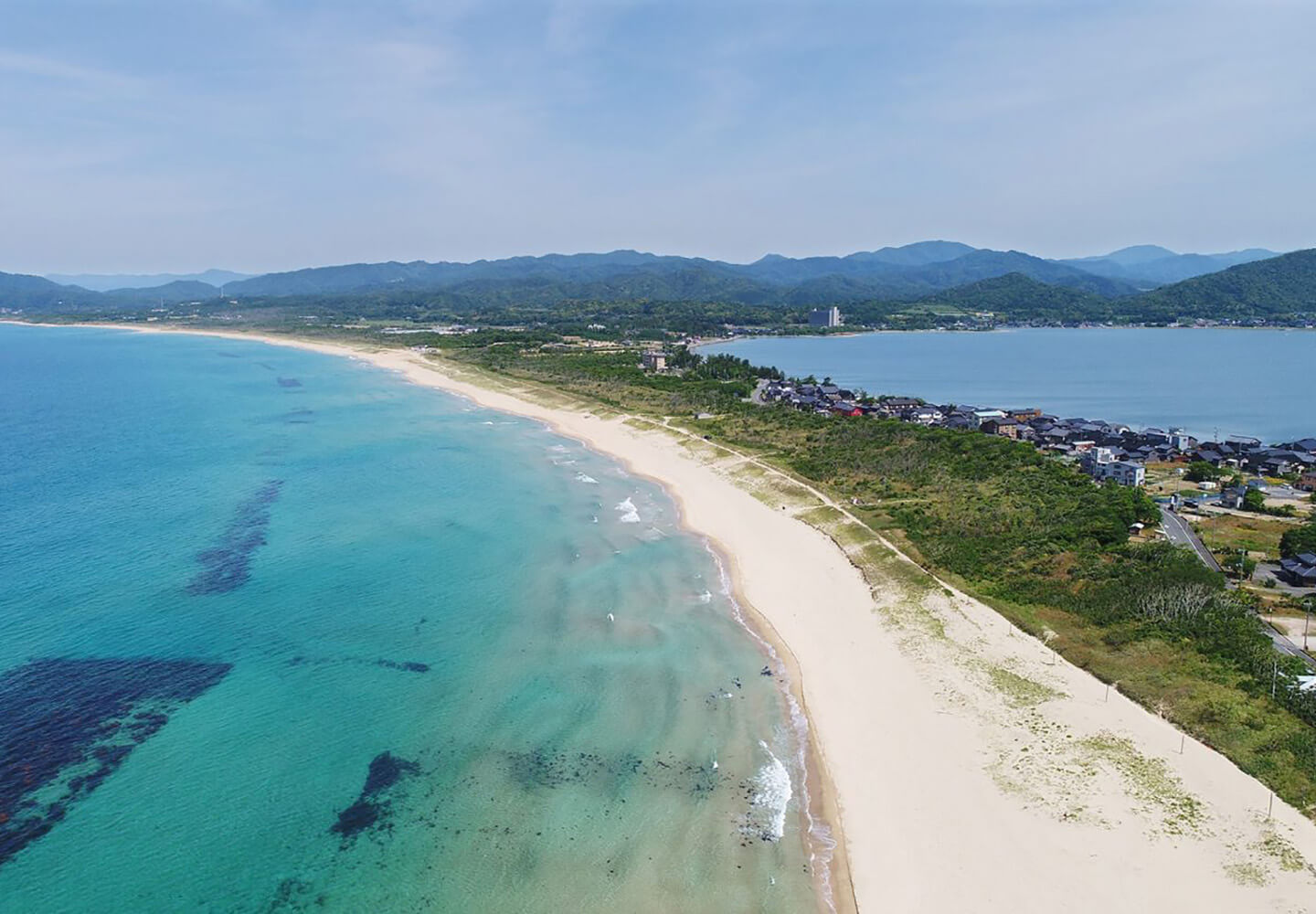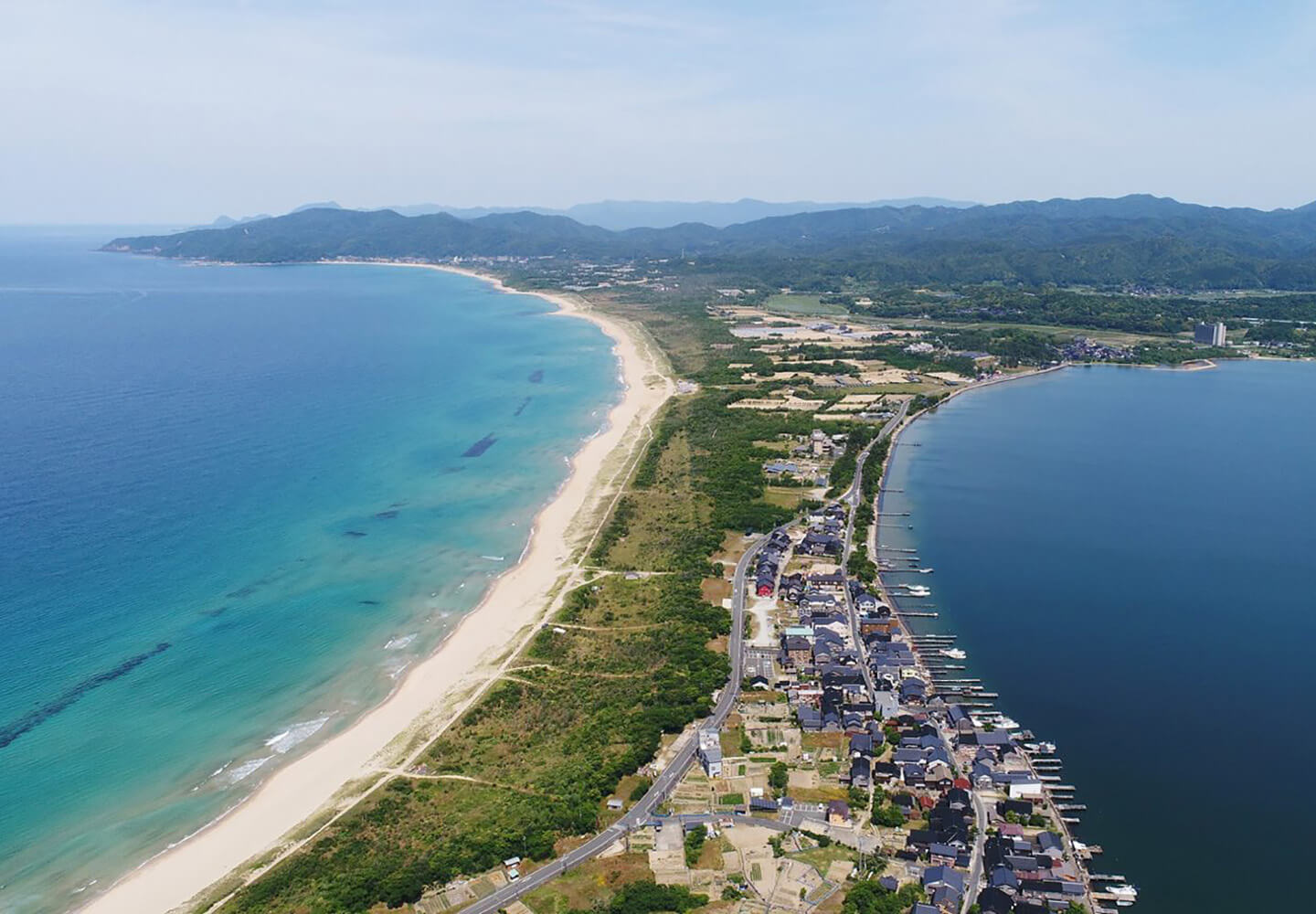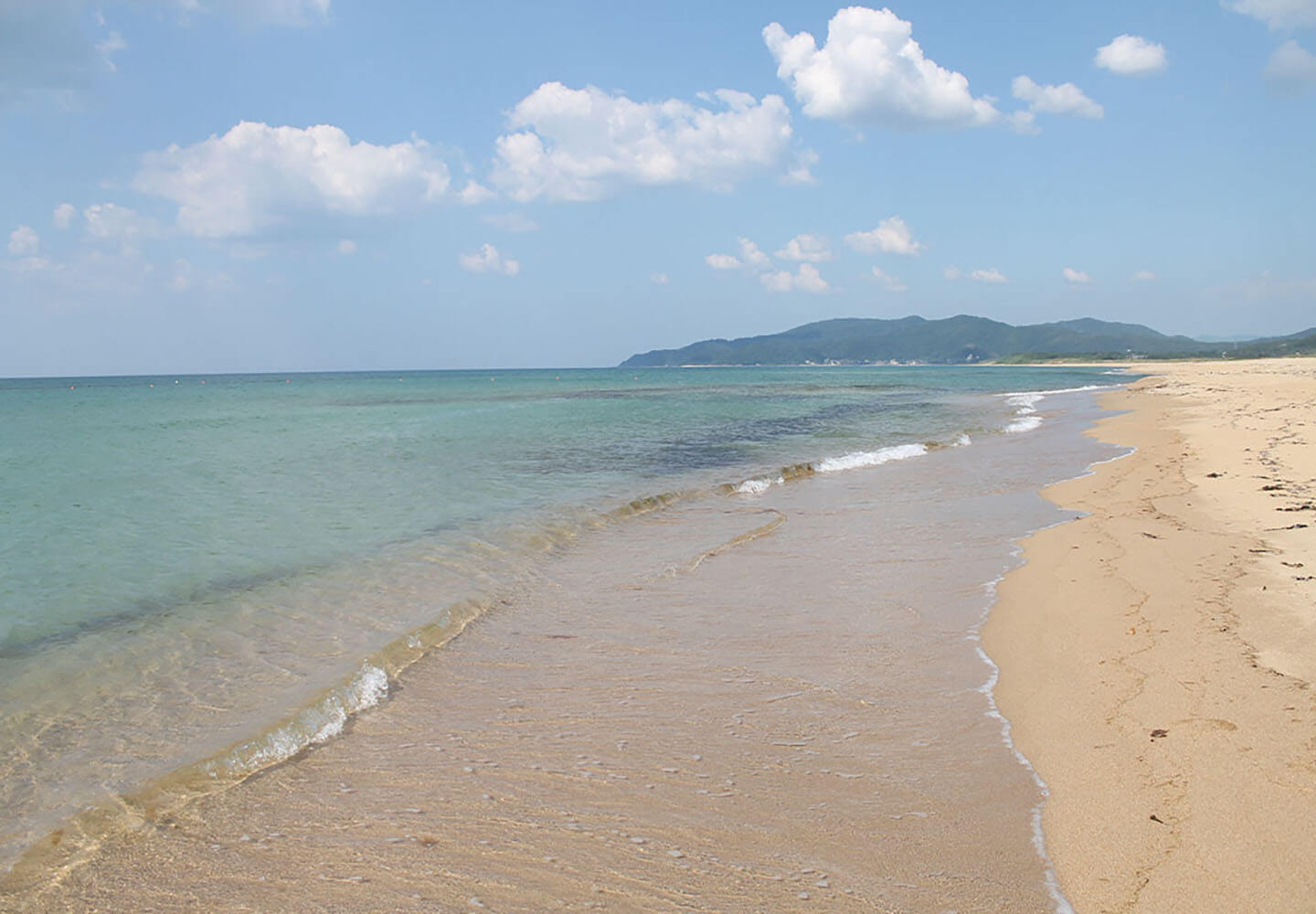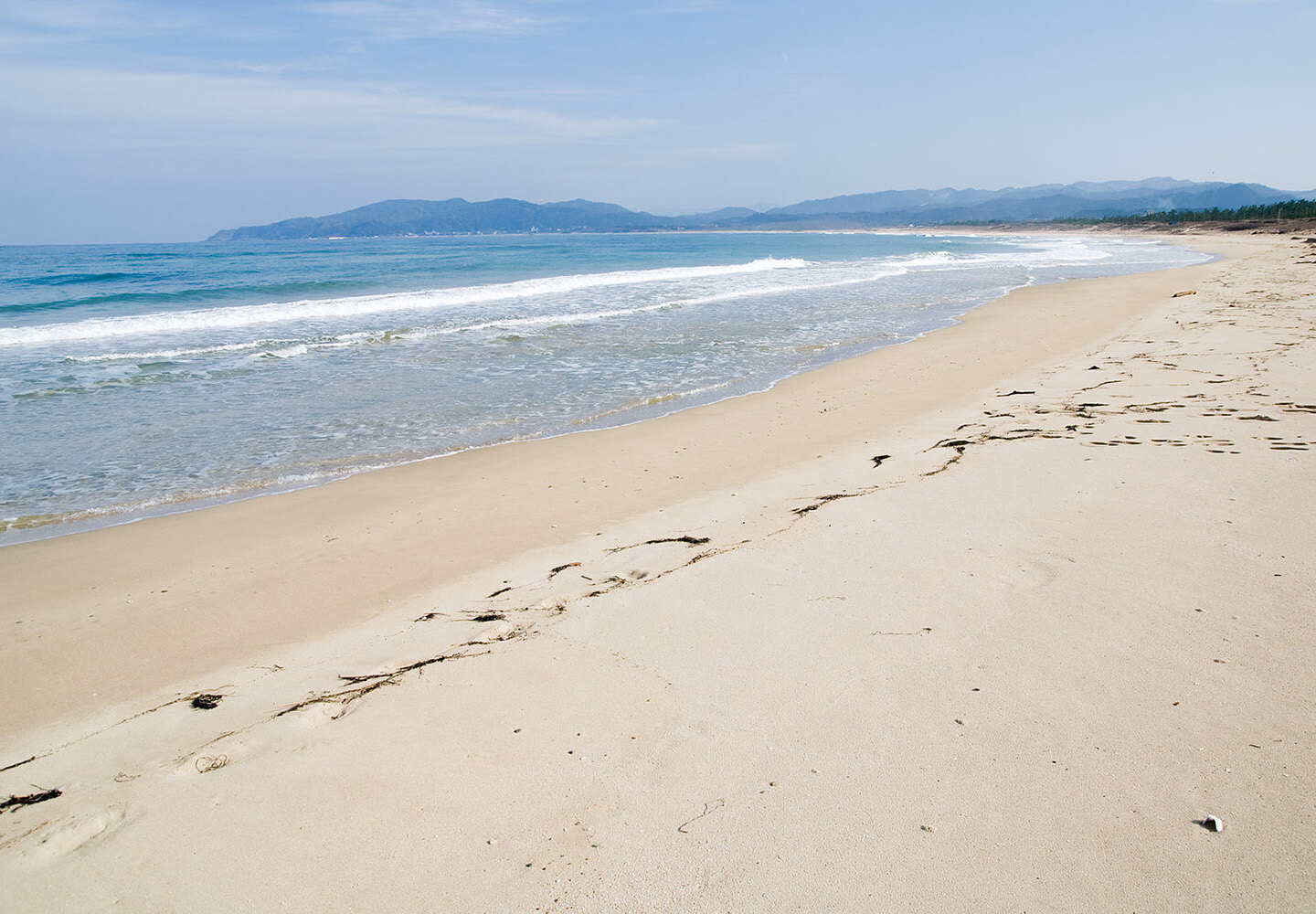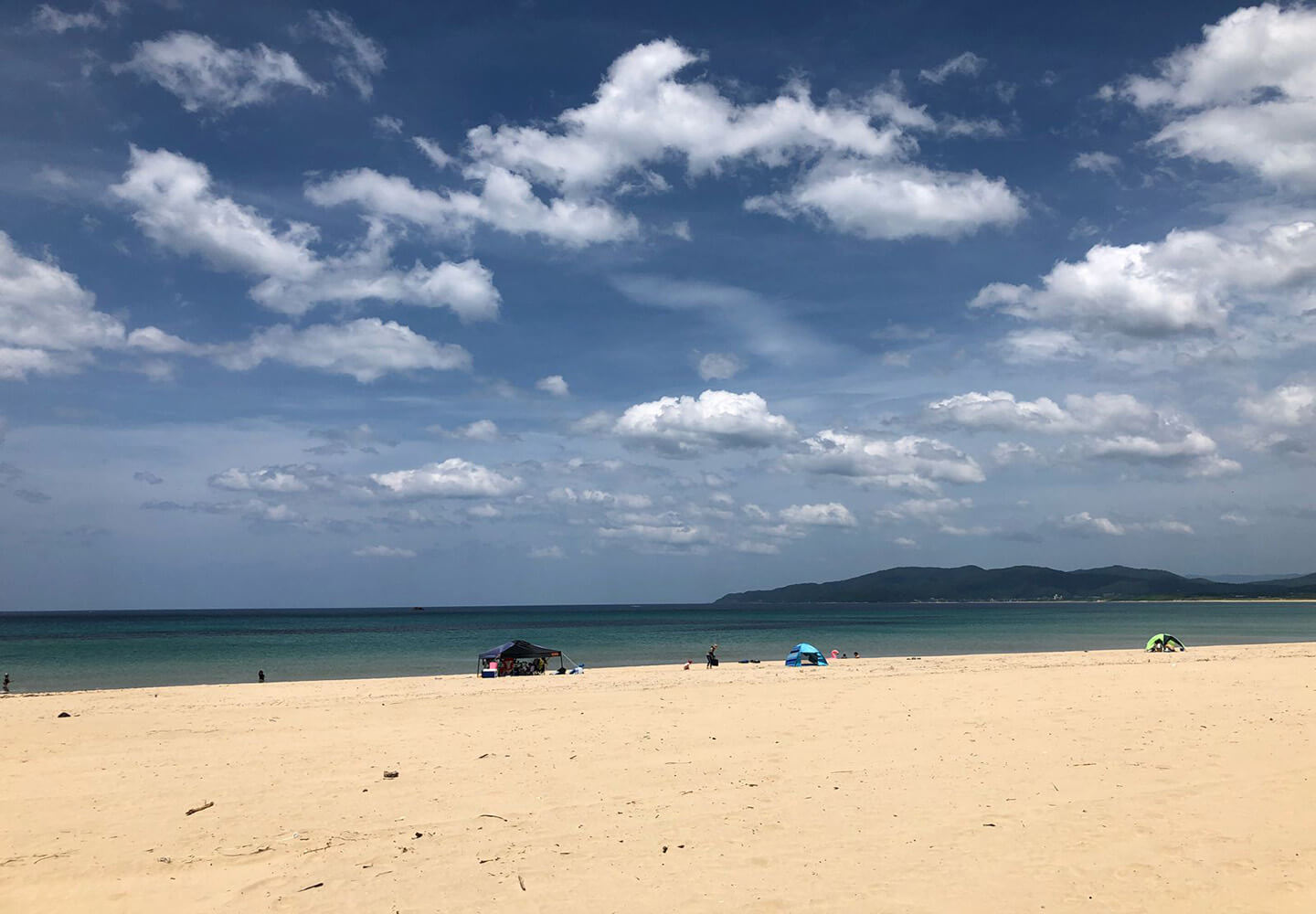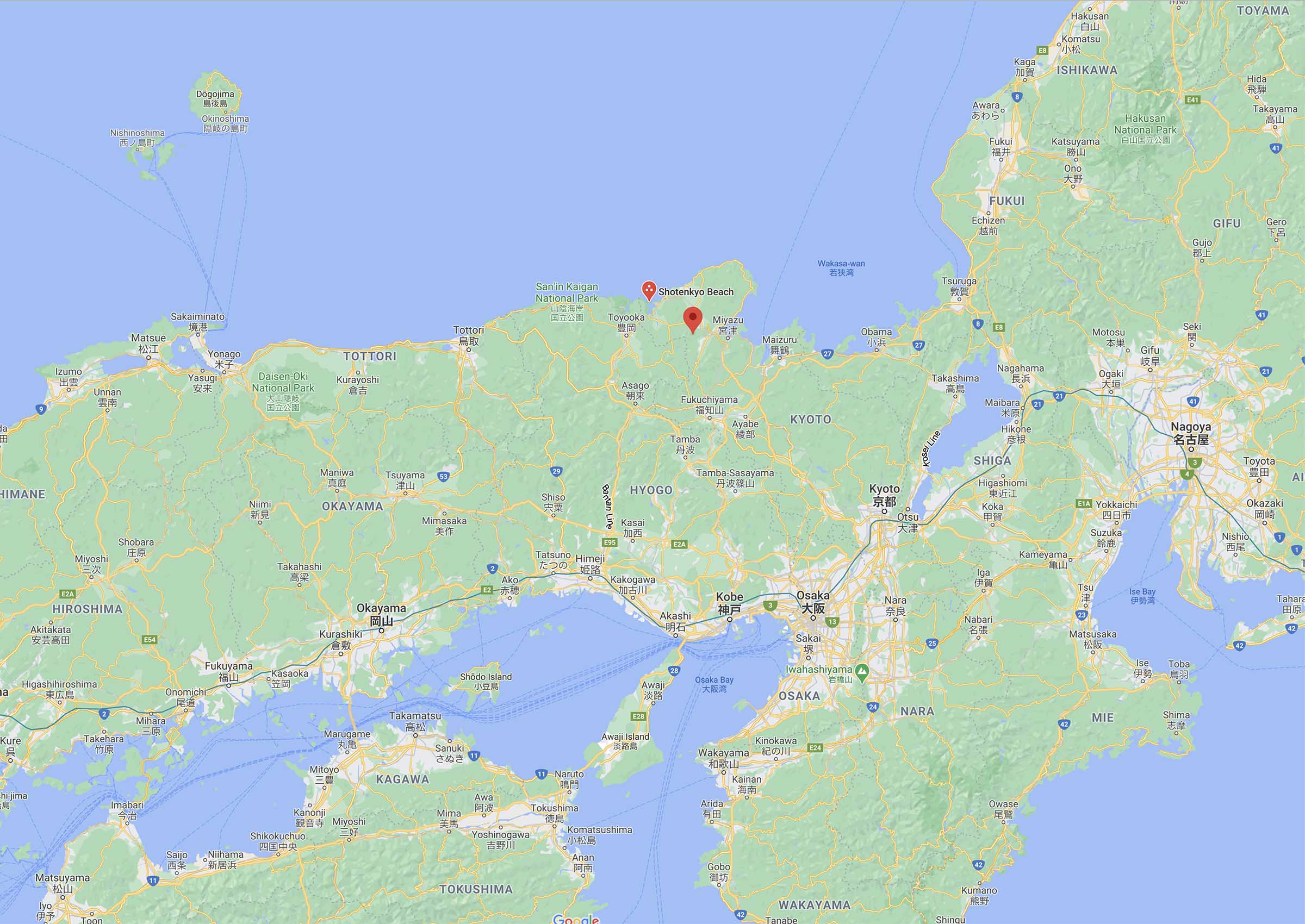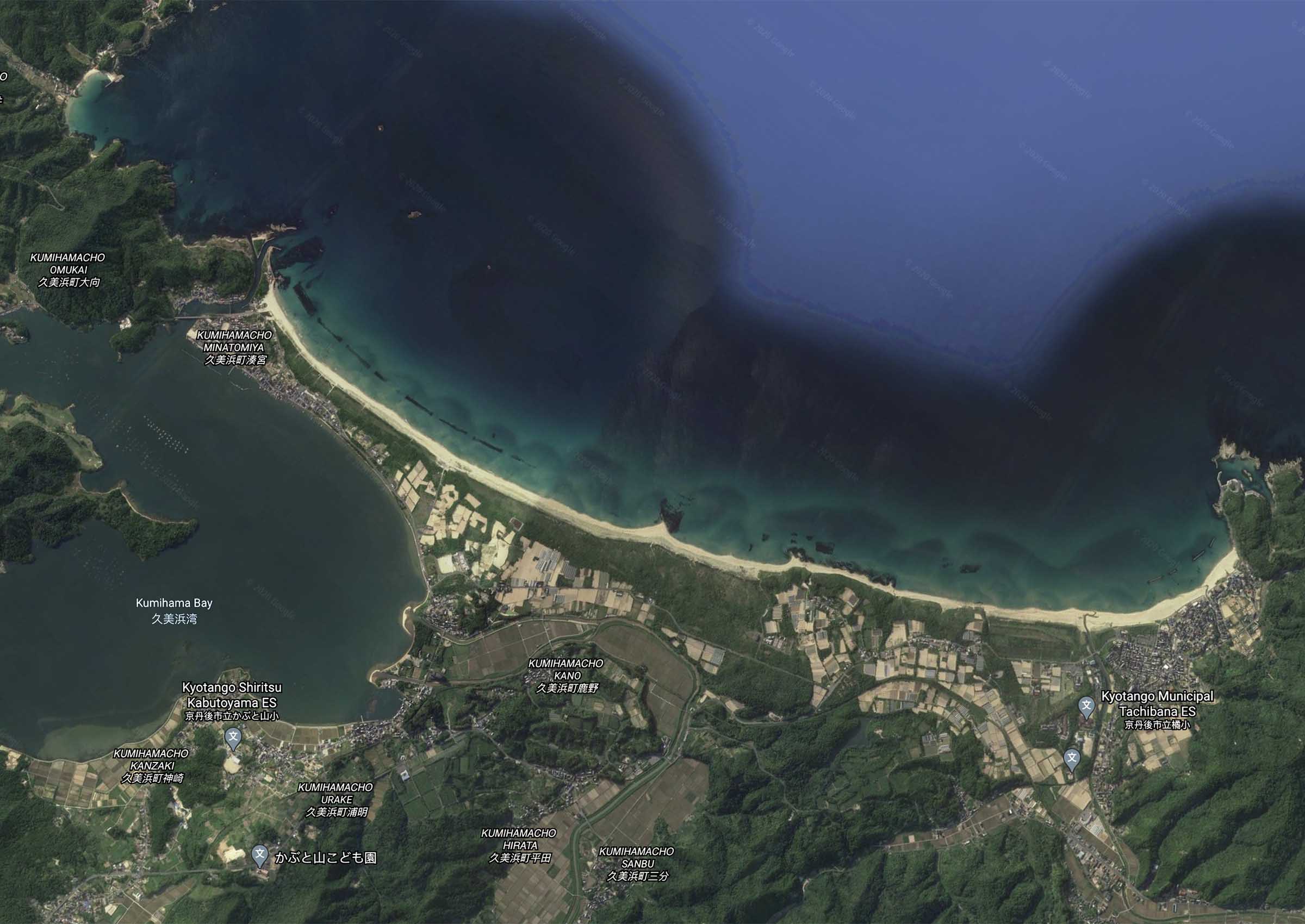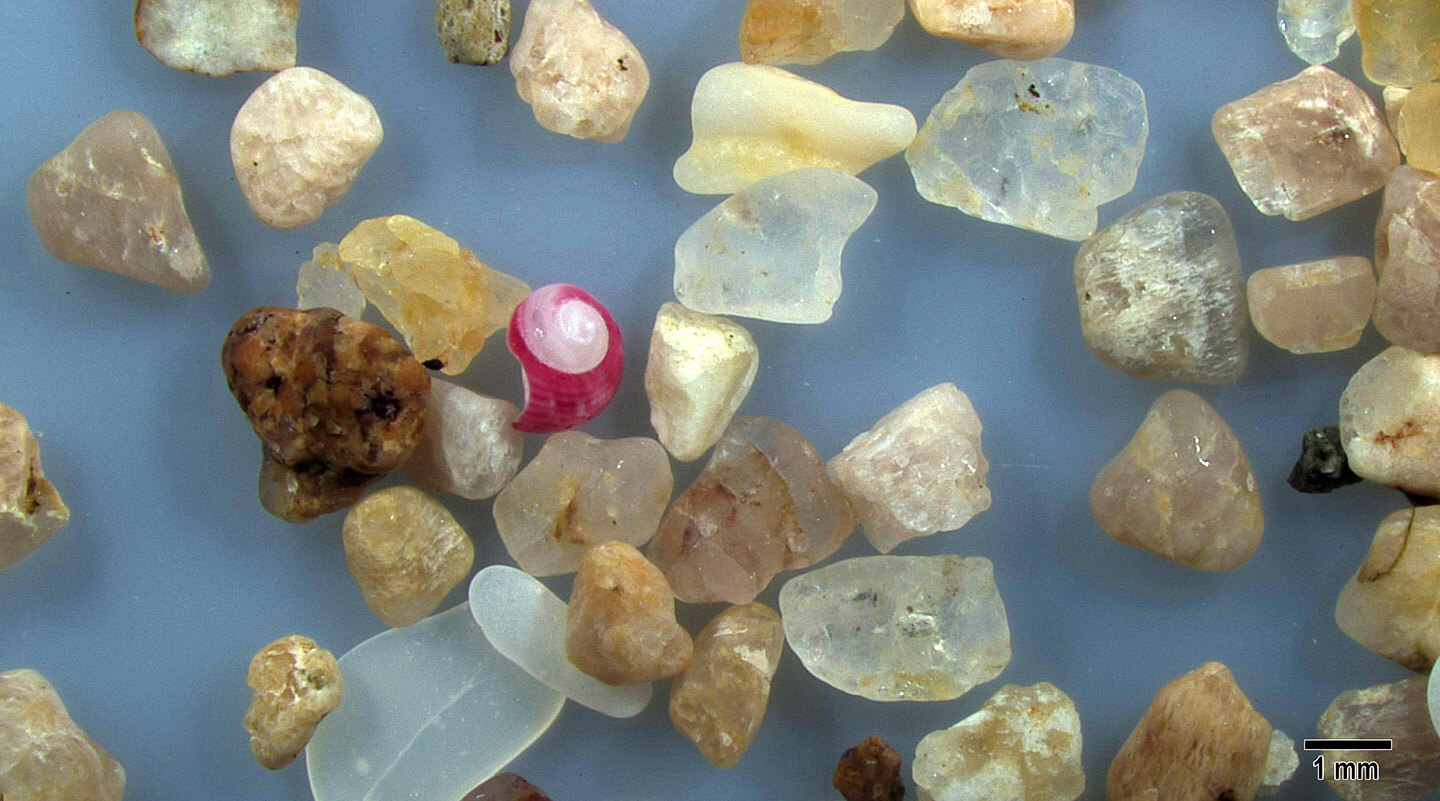
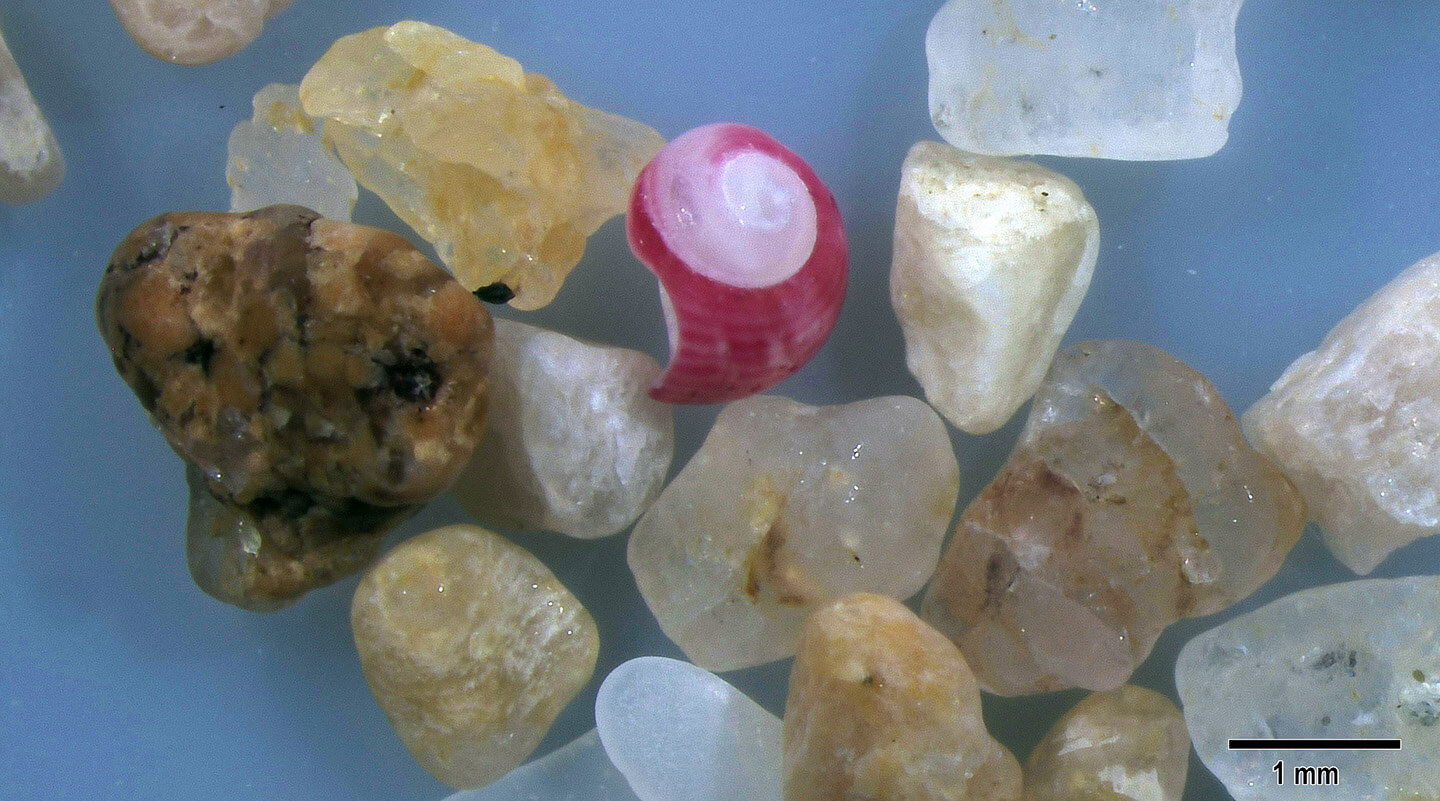
A red and white gastropod spiral is surrounded by feldspar grains and a variegated tan, brown and black grain to the left of the gastropod spiral that is likely metamorphic rock. A white opaque flat shell fragment is at the bottom center left of the lower magnified image.
Geographic Overview
Syotenkyo Beach if one of best beaches in Japan and boasts of a long coastline facing the Sea of Japan. Its beautiful coastline is designated as San’in Kaigan National Park.
Sand Gallery
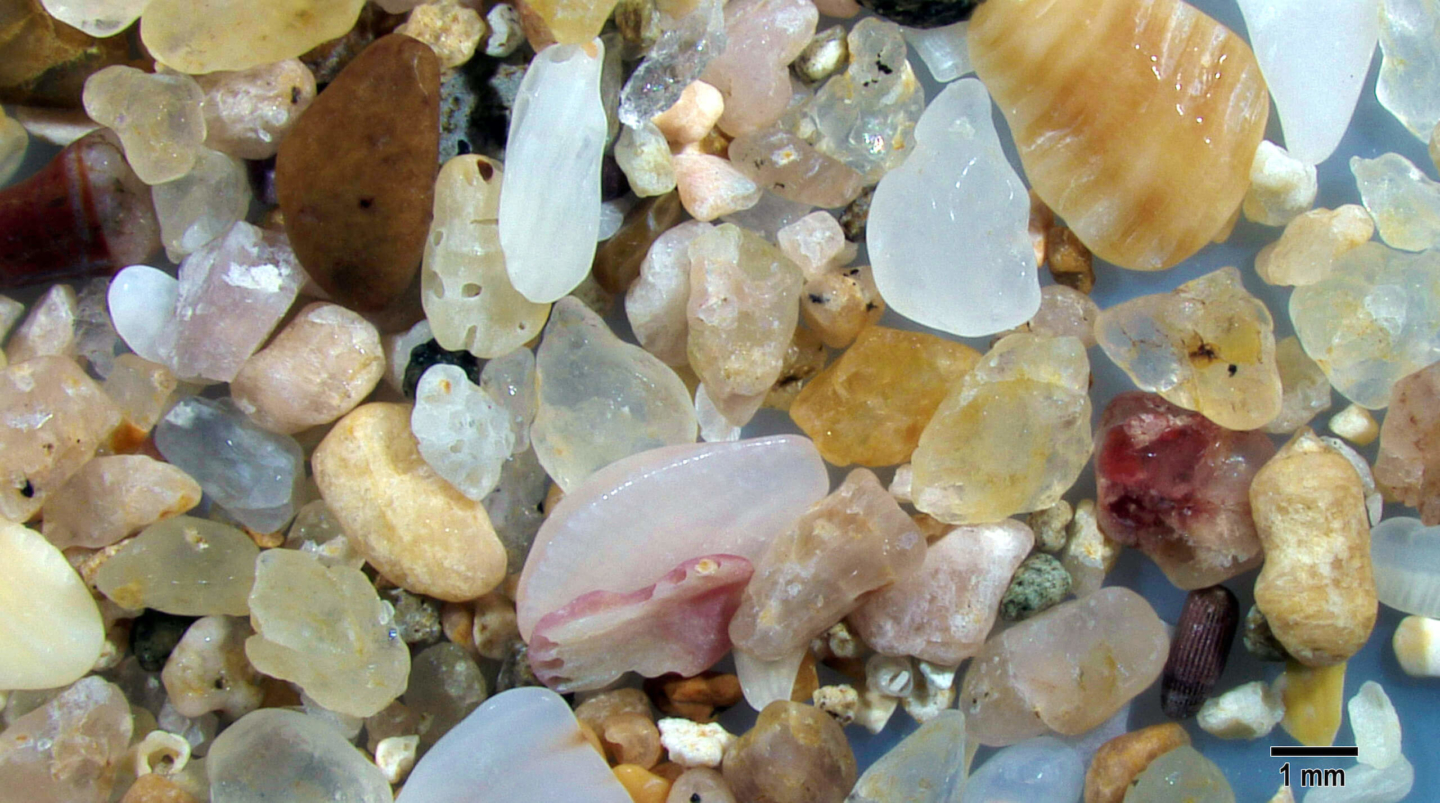
This mixture of marine and rock fragments includes an elongated semi-opaque white barnacle fragment in upper left center and a pink barnacle fragment with distinctive grooves in the lower center of the image. Pale yellowish-tan fragments with right angle edges are fragments of feldspar. A reddish-brown fragment at the middle right side is likely a volcanic sand grain and is located immediately above a brown grooved fragment of sea urchin test.
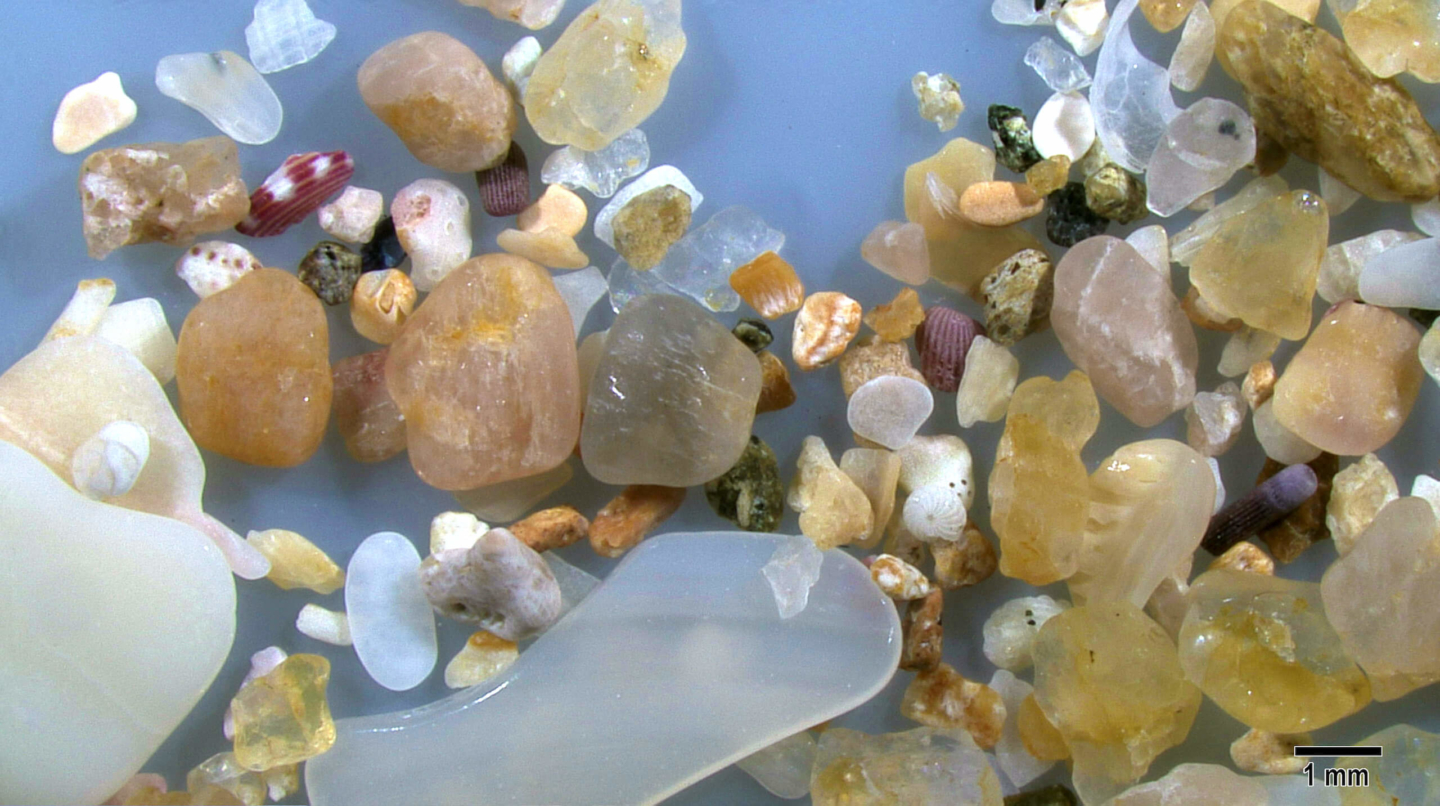
The small red and white colorful mollusk spiral in the upper left of this image is surrounded by smoothly worn tan grains of feldspar recognized by their right-angled edges. Three purple grooved fragments of sea urchin spine are present in this image, large white flattened opaque fragments of shell are present at the bottom left and center of the image and a small white foram with distinct chambers is present in the lower right center below one of the purple sea urchin tests. Small black and tan metamorphic rock fragments are seen in different parts of this image.
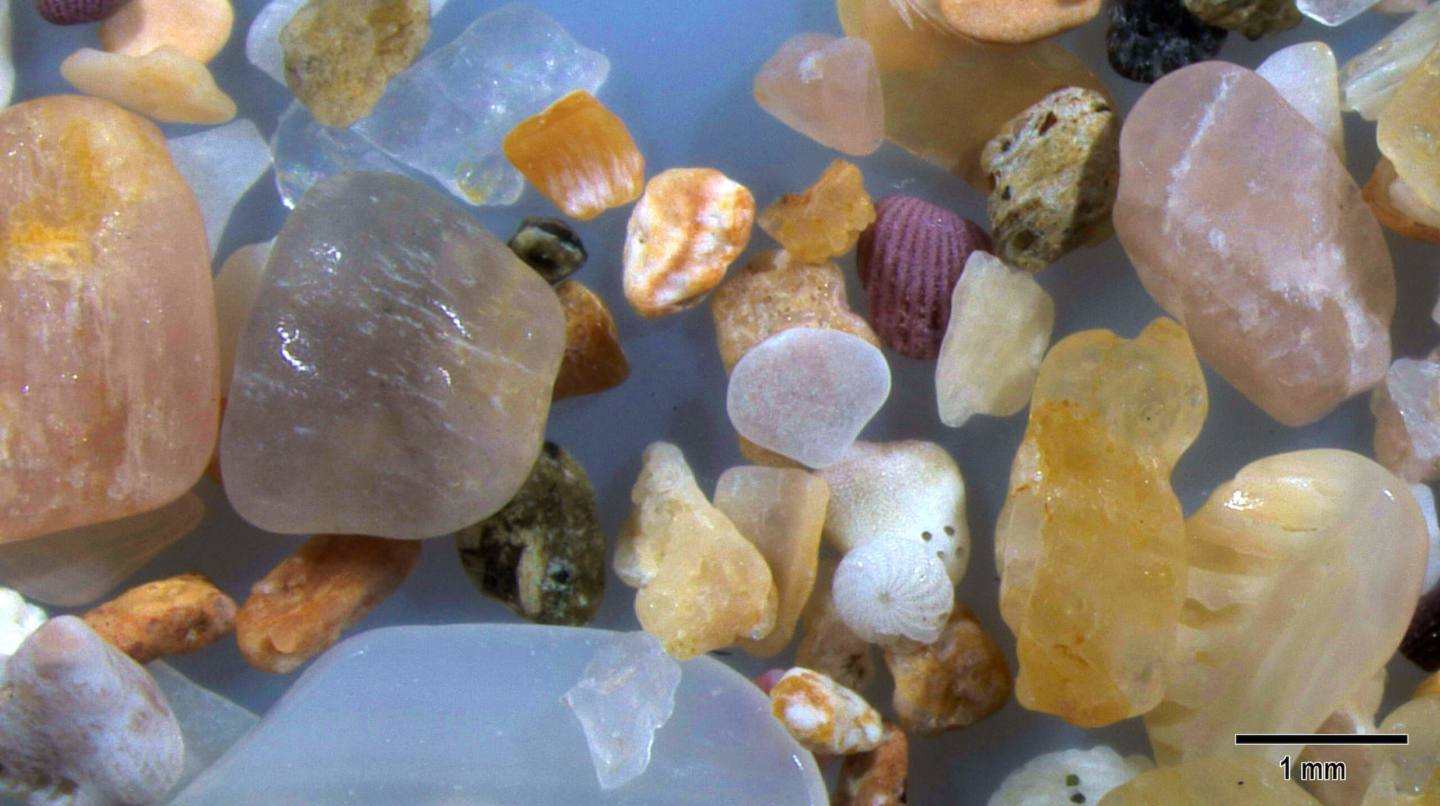
This is a higher magnification of the previous image with the white foram just to the right of center and below a purple grooved fragment of sea urchin spine. Glassy clear, tan and pinkish sand grains with right angle edges are feldspar grains.
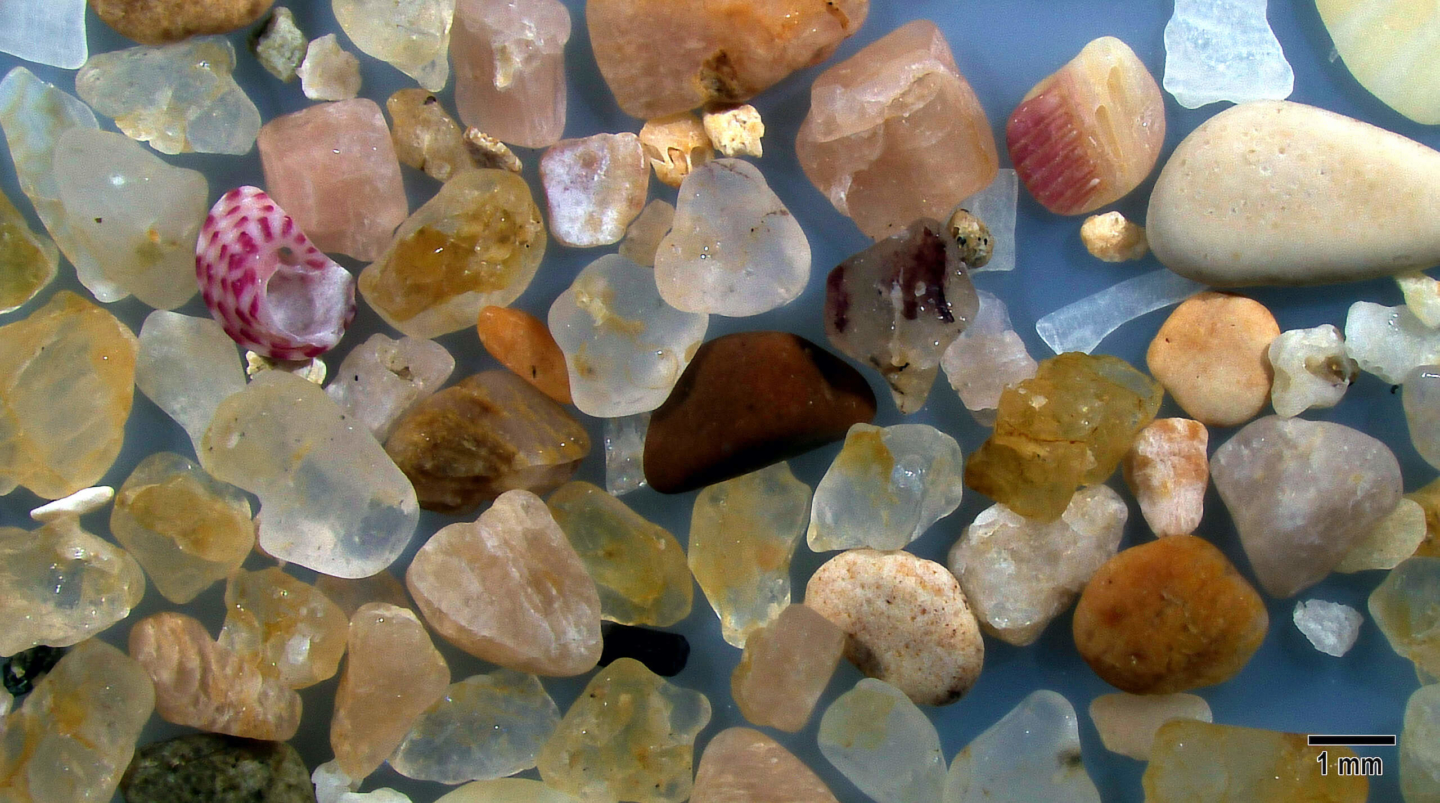
A red and white mollusk shell is surrounded by feldspar sand grains. A feldspar grain with black crystalline inclusions is next to a centrally located dark brown sand grain. A tan and red grooved fragment of barnacle shell is present near the upper right edge of the image.
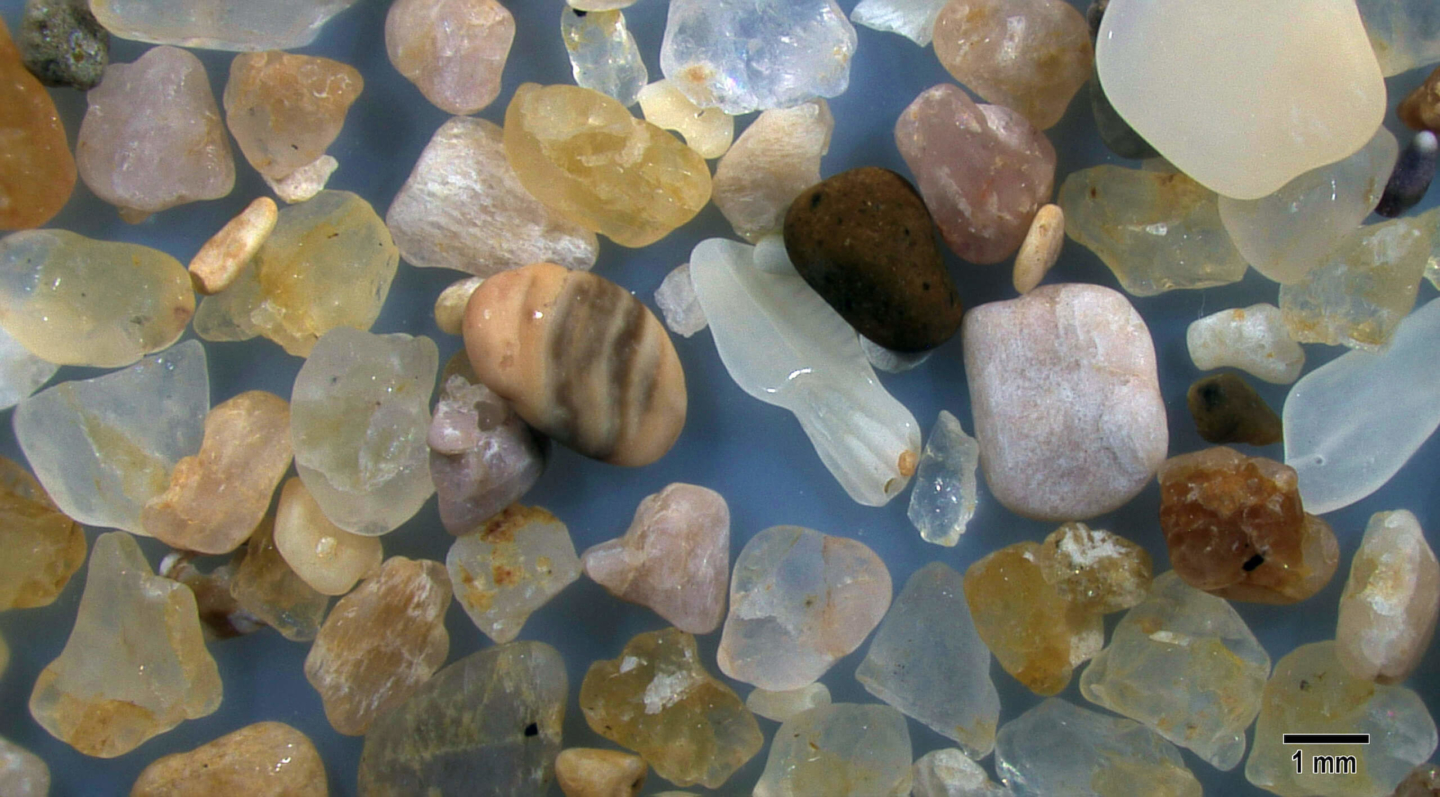
This high magnification shows a polished and smoothly rounded tan mollusk fragment with black stripes in the center next to an opaque white grooved barnacle fragment. A dark brown sand grain and a small bit of clear quartz are touching the barnacle fragment. Several opaque, yellow, light pink and tan fragments of feldspar are present throughout this image.
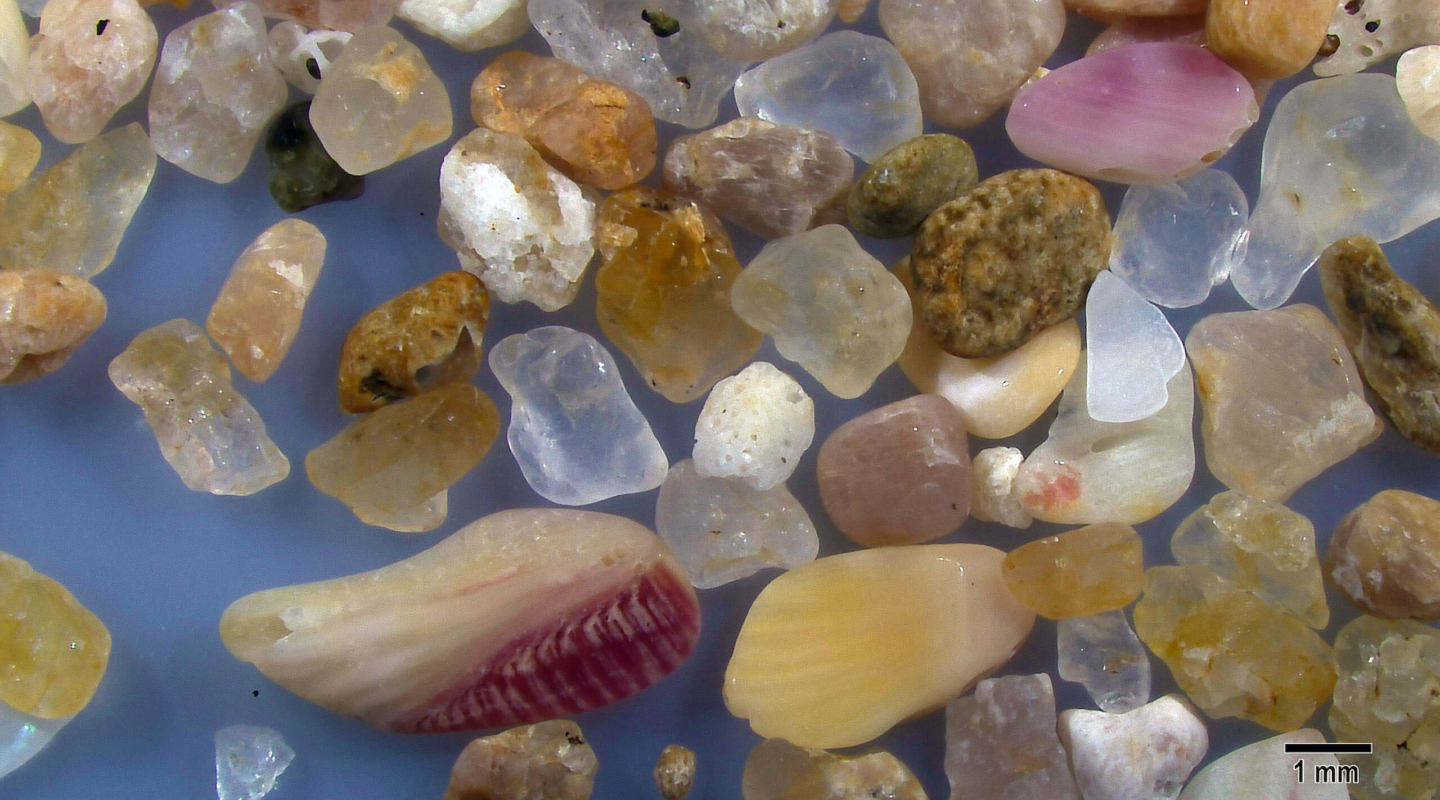
A small white foram fragment surrounded by opaque, tan and pink feldspar grains is present in the center of this image. The grooved tan and red and the grooved yellowish tan grains at the bottom of the image are barnacle fragments and a pink barnacle fragment is near the upper right of the image. The tan rock grain with black speckling just to the right of center may be a piece of granite.

